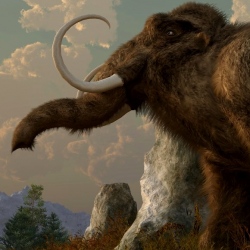
The deal was signed by Vasily Vasiliev, vice rector of North-Eastern Federal University of the Sakha Republic, and controversial cloning pioneer Hwang Woo-Suk of South Korea’s Sooam Biotech Research Foundation, on Tuesday.
Hwang was a national hero until some of his research into creating human stem cells was found in 2006 to have been faked. But his work in creating Snuppy, the world’s first cloned dog, in 2005, has been verified by experts.
Stem cell scientists are now setting their sights on the extinct woolly mammoth, after global warming thawed Siberia’s permafrost and uncovered remains of the animal.
South Korean scientist Hwang Woo-Suk (L) and Vasily Vasiliev (R), vice director of North-Eastern Federal University of Russia’s Sakha Republic, exchange agreements during a signing ceremony on joint research at Hwang’s office in Seoul. The research collaboration agreement will help Russian and S.Korean scientists to recreate a woolly mammoth which last walked the earth some 10,000 years ago.
Sooam said it would launch research this year if the Russian university can ship the remains. The Beijing Genomics Institute will also take part in the project.
The South Korean foundation said it would transfer technology to the Russian university, which has already been involved in joint research with Japanese scientists to bring a mammoth back to life.
"The first and hardest mission is to restore mammoth cells," another Sooam researcher, Hwang In-Sung, told AFP. His colleagues would join Russian scientists in trying to find well-preserved tissue with an undamaged gene.
By replacing the nuclei of egg cells from an elephant with those taken from the mammoth’s somatic cells, embryos with mammoth DNA could be produced and planted into elephant wombs for delivery, he said.
Sooam will use an Indian elephant for its somatic cell nucleus transfer. The somatic cells are body cells, such as those of internal organs, skin, bones and blood.
